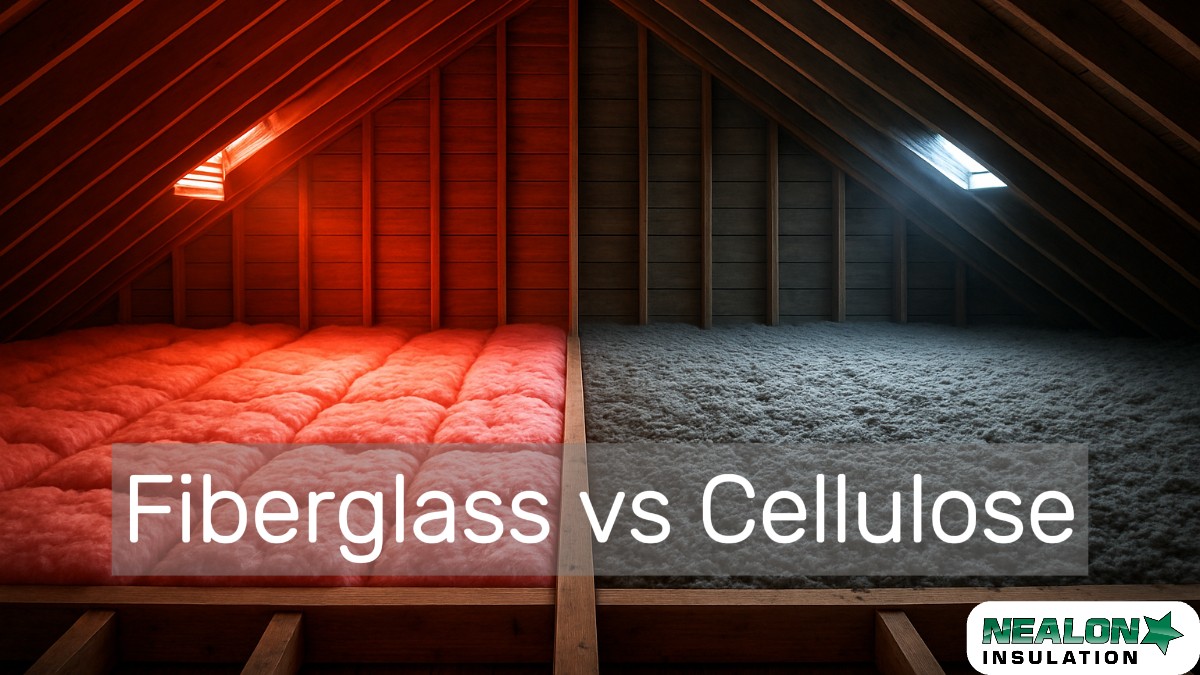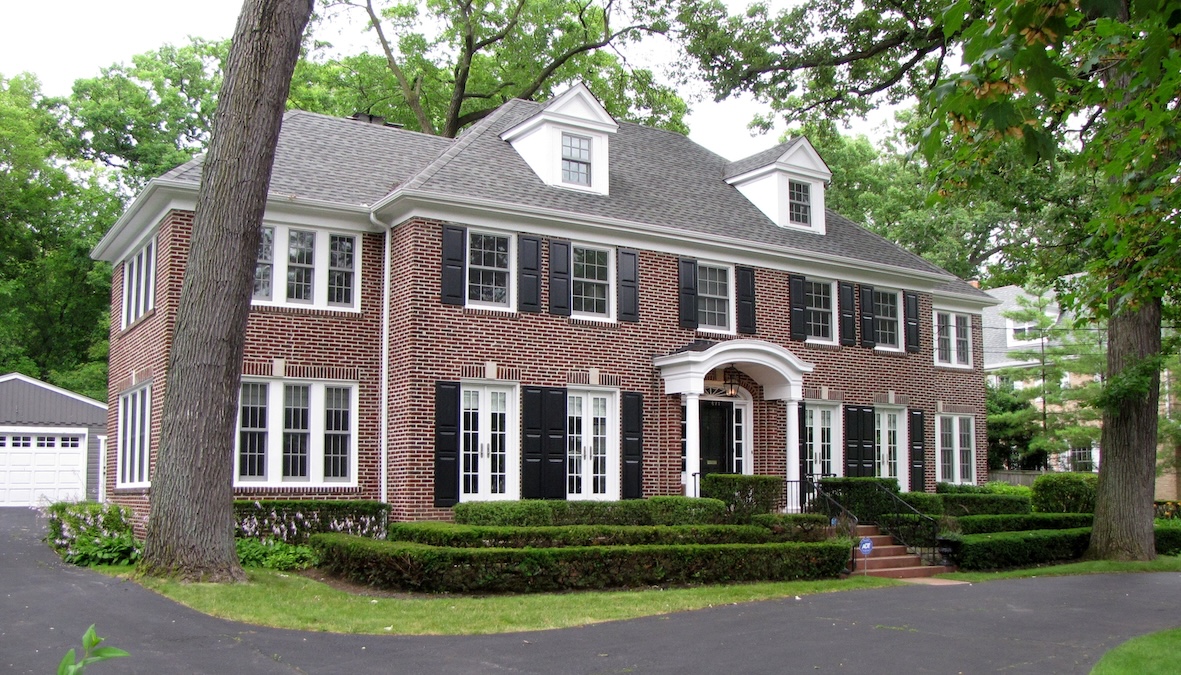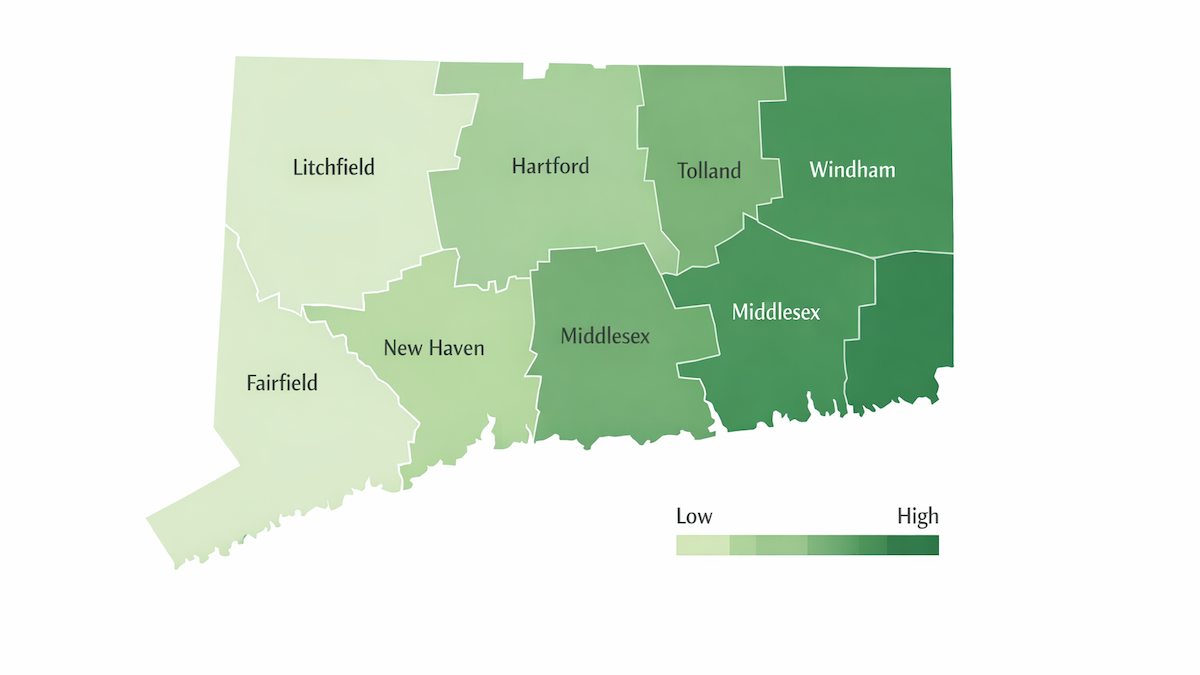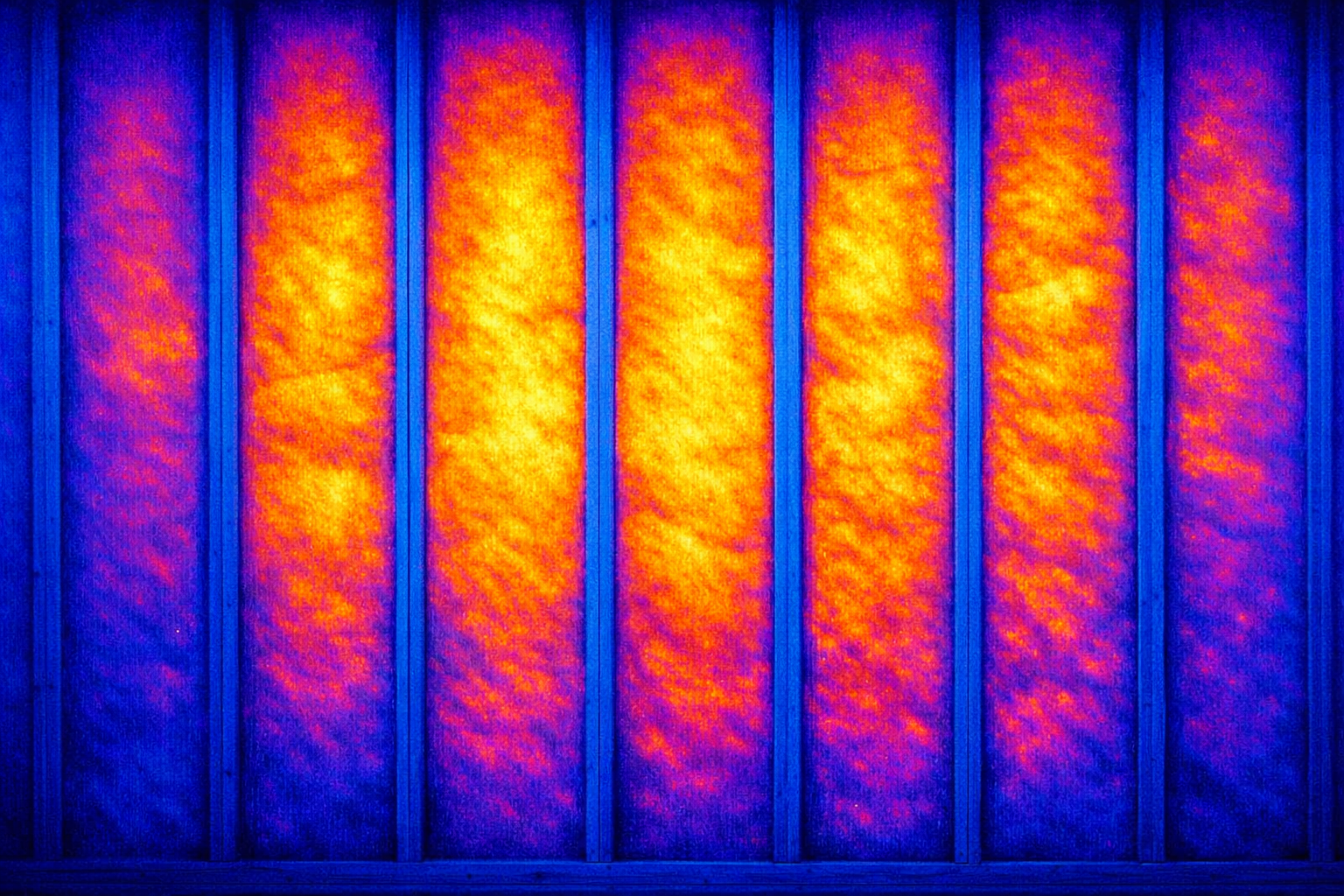Cellulose vs Fiberglass Insulation: Which One’s Right for Your Home?

If you’re standing in your attic or staring at an insulation quote wondering, “Should I go with fiberglass or cellulose?”—you’re not alone. It’s one of the most common questions we get from homeowners, and the internet hasn’t exactly made it clearer.
One article says fiberglass is tried-and-true. Another swears by cellulose like it’s insulation gold dust. So who’s right?
Truth is, both materials can do the job—but they don’t do it the same way. And if you live in a drafty old Cape near the Connecticut shoreline, the stakes are a little different than someone insulating a new build in Arizona.
In this post, we’ll break it all down without the fluff (pun intended). R-values, cost, fire safety, moisture resistance—we’ll give you the side-by-side you actually need so you can make a smart call for your home and your wallet.
Let’s dive in.
What Is Fiberglass Insulation?
Fiberglass is the stuff most people picture when they think of insulation—those pink or yellow rolls that look like cotton candy but itch like poison ivy. It’s been around for decades, and for good reason: it’s cheap, effective, and easy to install (at least for pros who don’t mind crawling around attics all day).
Fiberglass insulation is made from spun glass fibers—basically recycled glass and sand melted down and whipped into thin strands. It comes in two main flavors:
- Batts or rolls (pre-cut pieces that fit between studs or joists)
- Blown-in fiberglass (loose fill for attics or wall cavities)
It works by trapping air inside those little glass fibers, which slows down heat transfer. But here’s the catch: fiberglass isn’t air-sealing anything. If your house leaks like a sieve, fiberglass alone won’t solve the problem. It’s like throwing a blanket over a drafty window—better than nothing, but far from perfect.
Pros:
- Affordable
- Widely available
Cons:
- Doesn’t stop air leaks
- Can sag or compress over time
- Irritating to skin and lungs during install
What Is Cellulose Insulation?
If fiberglass is the old standby, cellulose is the scrappy underdog that punches way above its weight. Made from recycled newspaper and treated with borate for fire and pest resistance, cellulose insulation is dense, eco-friendly, and surprisingly powerful when it comes to performance.
You’ll mostly see it installed in two ways:
- Blown-in loose fill — great for attics
- Dense-packed into walls or cavities — perfect for retrofits and sound control
Unlike fiberglass, cellulose hugs every nook and cranny, especially when dense-packed. It slows heat and air movement, which makes a noticeable difference in drafty older homes.
Pros:
- Excellent air sealing
- Superior soundproofing
- High recycled content
- Fire-retardant treated
Cons:
- Can absorb moisture if ventilation is poor
- May settle slightly over time if installed poorly
- Not DIY-friendly
Which Insulation Performs Better?
Let’s cut to the chase—how do these two stack up in real homes?
- Energy Efficiency: Cellulose wins thanks to better air sealing
- Air Sealing: Cellulose (especially dense-pack) is the clear winner
- Soundproofing: Cellulose again
- Fire Resistance: Tie, assuming proper installation
- Moisture Resistance: It depends—neither likes moisture, but both can work if installed correctly
Overall winner for performance? Cellulose, especially in older homes that need sealing and soundproofing.
Cost Comparison: Cellulose vs Fiberglass
Both materials last 20–30+ years with proper installation, but fiberglass is more prone to sagging or shifting, especially in walls and ceilings.
Environmental Impact & Safety
- Recycled Content: Cellulose leads with 80–85% recycled newspaper vs fiberglass’s 40–60% recycled glass
- Production Footprint: Cellulose is less energy-intensive to make
- Indoor Air Quality: Both are safe if installed properly; cellulose uses borate, fiberglass is inert but can irritate during handling
- Pest & Mold Resistance: Cellulose edges out fiberglass thanks to its borate treatment
If you care about sustainability, cellulose wins hands down.
Best Uses for Each Material
Fiberglass is best when:
- You’re insulating a new build with open walls
- You’re doing a budget-friendly upgrade in accessible spaces
- You want a quick, code-compliant install
Cellulose is best when:
- You’ve got an older home with air leaks and uneven temps
- You want to improve comfort, quiet, and energy efficiency
- You care about using recycled, eco-friendly materials
Pro tip for Connecticut homes: Most homes around here weren’t built with energy performance in mind. That 1950s ranch or 1890s Victorian? It probably leaks like crazy. Dense-pack cellulose can tighten things up and make a huge difference.
So, Which Insulation Is Better—Cellulose or Fiberglass?
If you're just trying to pass code in a new build or insulate a detached garage on the cheap, fiberglass can get the job done. But if you want comfort, performance, and long-term value, cellulose is hard to beat.
At Nealon, we install both—because the right insulation isn’t about brand loyalty. It’s about what works for your house.
Still not sure what’s right for your home? We’ll take a look, give it to you straight, and build a plan that makes sense—whether that’s fiberglass, cellulose, or a combo.
Common FAQ's about Cellulose & Fiberglass
Can you mix cellulose and fiberglass insulation in the same home?
Yes, you can mix cellulose and fiberglass insulation in the same home. It’s common to use fiberglass batts in new construction and cellulose in older walls. Each material suits different applications, and proper installation with air sealing ensures consistent performance.
Is cellulose insulation safe for people with allergies or asthma?
Yes, cellulose insulation is generally safe for people with allergies or asthma. It’s treated with low-toxicity borates and produces less airborne fiber than fiberglass. Professional installation and proper air sealing reduce dust exposure. Sensitive individuals may choose to vacate during installation.
Does cellulose insulation attract pests or rodents because it's made of paper?
No, cellulose insulation doesn’t attract pests or rodents. Though made from paper, it’s treated with borates, a natural pest repellent. Most pests avoid it. However, any insulation can become a nesting area if entry points exist, so air sealing is key to prevention.
Which insulation is better for irregularly shaped cavities or hard-to-reach areas?
Dense-packed cellulose is better for irregular cavities and hard-to-reach areas. It conforms to uneven framing, fills tight corners, and surrounds wires and pipes. Fiberglass batts are rigid and may leave gaps in non-standard spaces. Cellulose creates a more complete thermal barrier.
Will cellulose or fiberglass insulation affect the resale value of my home?
Yes, quality insulation like dense-pack cellulose or well-installed fiberglass can increase resale value by improving energy efficiency and comfort. While insulation type isn’t listed on Zillow, it’s a selling point during inspections and audits. Thoughtful upgrades appeal to energy-conscious buyers.
Related Articles
Let's Work Together
Ready to transform your home into an energy-efficient haven? Schedule your free energy assessment today and experience the Nealon difference for yourself.



